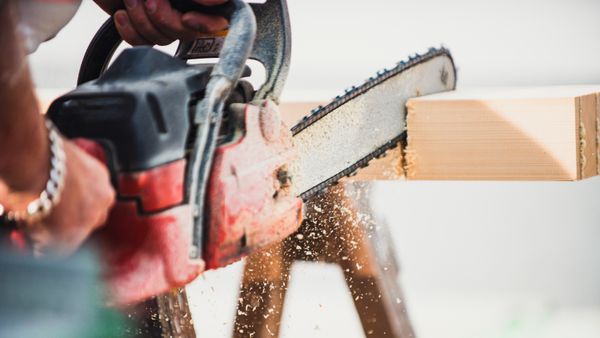Key Takeaways
- Changing a coping saw blade involves flexing the saw to release tension, unhooking the dull blade and hooking on a new one with the teeth pointing toward the handle.
- After attaching the new blade, release the pressure to return the saw to its rigid position and tighten the blade by twisting the handle. If there's a knob screw, tighten that as well.
- There are various types of blades for different materials, such as tungsten carbide for tile and high-carbon steel for thin metal, and the replacement process is the same regardless of blade type.
A coping saw is a type of handsaw you can use for delicate cutouts in woodworking, as well as to make coped joints for your moldings. A coping saw looks like a large C with a handle coming off one of the ends. The blade runs across the open end of the C. While the size of the "throat" of coping saws can vary -- meaning the distance between the blade and the back of the C -- the blades used on coping saws come in standard lengths.
When your coping saw blade becomes dull, you should change it right away before continuing work since using a dull blade makes your work harder and more dangerous. Not much effort is required to switch the blade on a coping saw, which is held in place by a slotted pin on each end. To remove the blade, squeeze the saw so that it flexes and the blade is no longer taut. Once the blade is flexed, you can unhook it on each end. When you attach your new blade, make sure the teeth point toward the handle. After it's hooked on, you can release the pressure you put on the saw so that it snaps back to its original rigid position. The new blade can be tightened by twisting the handle. If your saw has a knob screw across from the handle, tighten that as well.
Advertisement
If you need to switch the blade on your coping saw to a different type of blade, the process is the same as replacing a dull one. The reason you might need a different blade is because there are specific types of blades for working with different materials. For instance, tungsten carbide blades are used to make curved cuts in tile, while high-carbon steel blades are used to cut through thin sheets of metal.
Advertisement


